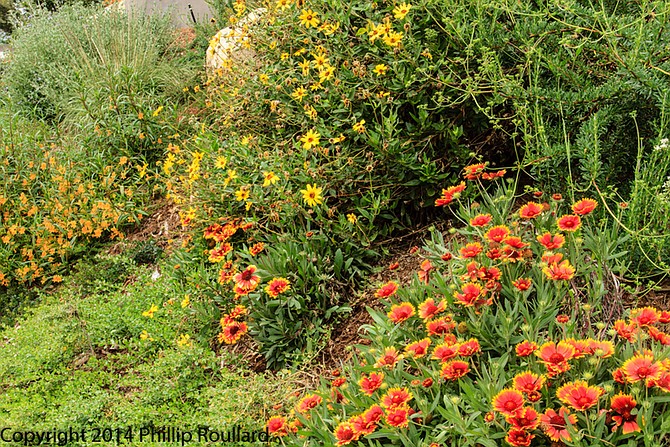 Facebook
Facebook
 X
X
 Instagram
Instagram
 TikTok
TikTok
 Youtube
Youtube

When my husband and I moved into our San Diego home, our landscape was “drought tolerant” and “low maintenance” — with ice plant in the back and concrete in the front. It was terribly sterile, except for the rats that lived in the ice plant. We put out bird feeders but ended up with pigeons, more rats, and weeds from the seed.
After doing some research, we got our first native, a Catalina cherry. Our second plant was a toyon, and after that we were hooked; we decided to redo our entire yard.
In 2003, I shared my vision of an all-native hillside with a landscape designer and contractor, only to be met with “that will be ugly.” I held firm and, begrudgingly, the landscaper agreed to plant the natives if I purchased and placed them where they should go.
We started with ceanothus, manzanita, coyote bush, and more toyon. They were then complemented with monkeyflower, buckwheat, and sage. Later we also added a couple coast live oak trees — I should call them sprouted acorns, as they were only eight inches tall.
When it was time to tackle the concrete that was my front yard, we hired a new landscape gardener and repeated the successes we had in the back and added some other beauties.
Now the yarrow and brittlebush are alive with the buzz of bees. The deer grass and giant wild rye sway in the breeze, and the birds are starting to enjoy the cover the oaks provide. By adding a bird bath, we now provide the four things needed for wildlife: food, cover, places to raise young, and water. At the holidays, our relatives enjoyed watching a hawk use our yard as a hunting ground.


When my husband and I moved into our San Diego home, our landscape was “drought tolerant” and “low maintenance” — with ice plant in the back and concrete in the front. It was terribly sterile, except for the rats that lived in the ice plant. We put out bird feeders but ended up with pigeons, more rats, and weeds from the seed.
After doing some research, we got our first native, a Catalina cherry. Our second plant was a toyon, and after that we were hooked; we decided to redo our entire yard.
In 2003, I shared my vision of an all-native hillside with a landscape designer and contractor, only to be met with “that will be ugly.” I held firm and, begrudgingly, the landscaper agreed to plant the natives if I purchased and placed them where they should go.
We started with ceanothus, manzanita, coyote bush, and more toyon. They were then complemented with monkeyflower, buckwheat, and sage. Later we also added a couple coast live oak trees — I should call them sprouted acorns, as they were only eight inches tall.
When it was time to tackle the concrete that was my front yard, we hired a new landscape gardener and repeated the successes we had in the back and added some other beauties.
Now the yarrow and brittlebush are alive with the buzz of bees. The deer grass and giant wild rye sway in the breeze, and the birds are starting to enjoy the cover the oaks provide. By adding a bird bath, we now provide the four things needed for wildlife: food, cover, places to raise young, and water. At the holidays, our relatives enjoyed watching a hawk use our yard as a hunting ground.
Comments